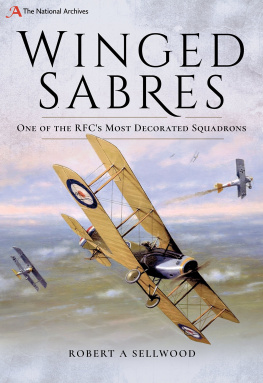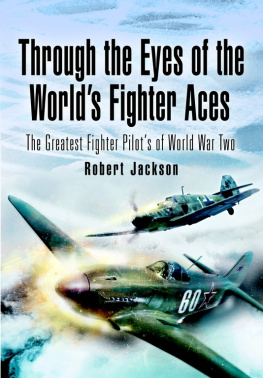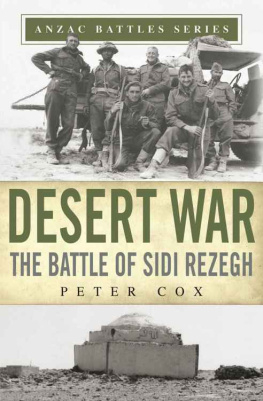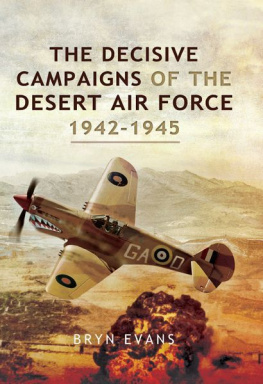The True Story of J.F. Stocky Edwards,
World War II Flying Ace
To my mother, Alice
known in World War II as
Corporal Mabbie Mabbutt,
W4250, CWAC
with love and admiration
Contents
Map to come
The Bristol Bombay transport plane skimmed over the sand, just 50 feet above the North African desert. The rough vibrations of its engines made so much noise that the passengers on boardnine young pilots going to their first battle frontcouldnt talk to one another.
Jim Edwards, like the others, sat strapped into an uncomfortable bucket seat, thinking his own thoughts. He was a twenty-year-old Canadian from Battleford, Saskatchewan. Just over a year ago, hed been a high school student whod never travelled more than 90 miles from home. Now he was in North Africa, headed for a place called Antelat. He couldnt imagine what this remote Royal Air Force base in the Libyan desert might look like. But hed been told that the squadron he was joining had Hurricane fighter planes, and hed been well trained to fly them. Jim felt a little nervous, but mostly he was eager to get into combat against the Luftwaffe, the German air force.
Checking his watch again, Jim saw that theyd been in the air for almost two hours. From what hed been told, they should have been at their base by now. Just when he was wondering if the Bombay was lost over the vast, empty desert, Jim noticed that the pilot was throttling back the engines and he felt the wing flaps being lowered. Because the transport plane was already flying so low, it was on the ground in a couple of minutes.
When the Bombay had taxied to a halt, the pilots jumped out the fuselage door into billows of sand kicked up by their plane. The engines stopped, but the hazy air was still full of a loud, metallic chattering. At first, Jim couldnt quite figure it out. Just a few yards away from the plane he saw a large tentprobably the mess tent, he thought. But beyond that, he saw the source of the racket: teams of men were feeding bullets into two ack-acks (anti-aircraft guns) and firing them into the sky.
Jims eyes followed the angle of the barrels upward, and he spotted two planes coming in low overhead. He stared open-mouthed. They were German bombersJunkers 88s. Hed been trained to recognize them from drawings and diagrams, but here they were, the real thing. They headed off over a rise, and within seconds, a loud explosion made Jim jump. He could see clouds of sand and smoke rising in the air, but he couldnt see what the bombs were hitting.
Dont stand about gawkingget in the tent! Jim turned with a start and saw a man in the entrance to the mess tent, waving his arm frantically. He and the other new arrivals scrambled under cover just as two more explosions went off. Jim wondered how much protection a piece of flapping canvas was supposed to give them. There were a couple of long folding tables in the tent, but no one seemed to be diving underneath them.
Three of the men standing in the tent introduced themselves as pilots of 94 Squadron. Jim could hardly believe it. His first impression was that they were a sorry lot. Although his own clothes were sweaty and wrinkled after the flight, he was dressed in a proper summer uniform. Every one of the pilots was dressed differently, and one man was shirtless. They also needed shaves, and their shaggy hair was windblown and stiff with sand.
Isnt thereumsomething we should be doing? one of the newcomers asked.
Some of our pilots are already standing by, out on the airstrip, said one of the scruffy pilots. If their planes arent bombed to pieces.
We cant take off, anyway, the second pilot chimed in glumly. Weve only got four Hurries left, and their wheels are stuck in the mud.
Its all the rain weve had the last week, the third pilot explained. Turns the airstrip into gumbo.
As quickly as it had begun, the attack was over. Everyone in the tent stepped outside to watch the two German bombers climb into the clouds and disappear.
Jim had never imagined that his new squadron would be in such a desperate situation. What have I got myself into? he thought. How can we fight without planes?
James Francis Edwards was born on June 5, 1921, on a farm near Nokomis, Saskatchewan, about 80 miles east of Saskatoon. His grandfather Edwards had been a pioneer homesteader in the area.
Jim was the second child in a close-knit farm family; he had an older brother, Bernie, and two younger sisters, Dorothy and Jeanne. His parents, Wilfrid and Alice Edwards, struggled to make their quarter section of land prosper. When Jim was five and Bernie was seven, an early blast of wintry weather destroyed the Edwardss wheat crop before it could be harvested. To support his family, Jims father took his horses and went to work for another farmer. In that farmers stable, his horses caught sleeping sickness (equine encephalitis) and died.
That was the final blow. The Edwards family gave up on farming and moved to Battleford, Saskatchewan, a town of about 1,200 people, where Wilfrid studied to become an insurance agent. Although Bernie was eighteen months older than Jim, he hadnt been to school yet, because hed been helping on the farm. The two boys started grade one together the next fall.
In Battleford, two more boys were born: Leo and Wilfrid. By the time Jim was ten, the Great Depression had brought hard times to Canada, and many people were out of work. The 1930s were especially tough years on the Prairies, where drought blew away topsoil and withered crops.
The Edwards children always had a roof over their heads, food to eat and shoes on their feet, but they had no luxuries. As the eldest, Jim and Bernie were expected to help out with chores. They chopped wood to feed the stove that heated the house. But the boys also did their share to provide for their family.
Every morning at 5:45 a.m., Jim and Bernie met the milk truck at the railway station and clambered aboard. The truck then slowly made its way up and down the still-dark streets of Battleford. The boys jumped down from the back of the truck and ran up to each house with bottles of milk. They left the bottles on the front porch and dashed back to reboard the truck before it got too far ahead of them. In summer, it took the boys about an hour and a half to deliver the milk. In winter, when temperatures plunged as low as 40F, the milk was delivered by a slower sleigh, and delivery took about two hours. Each boy was paid for his work with two quarts of milk, which were very welcome in the Edwards home. Clutching the bottles in their mittened hands, Bernie and Jim ran home to gulp down a hot breakfast and then hurry off to school.
Jim never thought of the milk run as a hardship. He loved to be active, and his morning job still left him plenty of time for sports and games after school. Although he was smaller than many boys his age, he was fast and well coordinated and excelled at baseball and hockey. By the time he was twelve, he was playing on the towns baseball team with grown men.
To Jim, Battleford seemed like the perfect place to grow up. It was a town where people from different backgrounds mixed together and helped one another.
Jim had white friends and Metis friends; friends who were Catholics like him, and friends who were Protestants; friends whose fathers scraped together a living doing odd jobs, and friends whose fathers were bankers and doctors. Jims parents taught him to respect people for their characters and abilities, not their social standing. Jim grew up believing that this was the way life should be.













